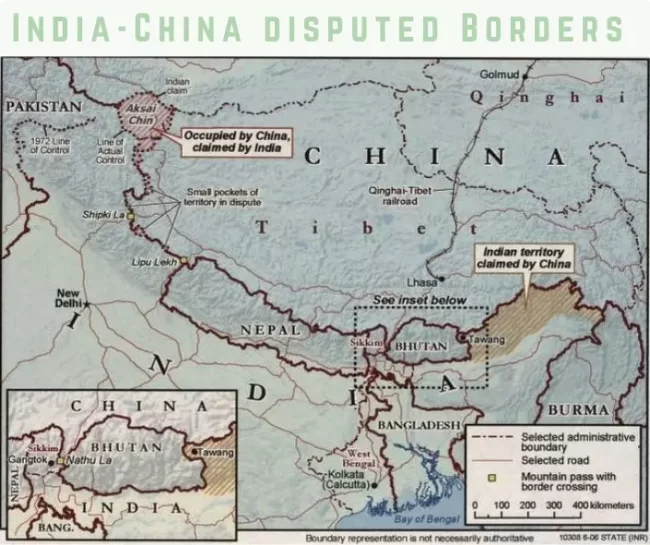The China-India border is one of the most volatile and disputed borders in the world. It has been a source of tension and occasional conflict between the two Asian giants for several decades. The border issue is rooted in historical, geopolitical, and territorial disputes, creating a complex and challenging situation. This article aims to provide a detailed overview of the China-India border, including its historical background, territorial conflicts, recent developments, and potential implications for regional stability.
Historical Background
The border dispute between China and India traces its roots back to the British colonial era. The contested territories, primarily in the western and eastern sectors, were inherited from the colonial period and have been a cause of contention ever since.
The Sino-Indian War of 1962 established the first operational border in the Aksai Chin area of the border, known as the Line of Actual Control (LAC) in India. However, the demarcation of this line by official boundary commissions from both sides is still pending.
China-India border details
The China-India border stretches over 3,488 kilometers. It runs along the Indian states of Jammu and Kashmir, Himachal Pradesh, Uttarakhand, Sikkim and Arunachal Pradesh. The western sector, known as the Line of Actual Control (LAC), divides the Indian-administered Jammu and Kashmir from the Chinese-administered Aksai Chin region. The eastern sector, which includes Arunachal Pradesh, is claimed by China as “South Tibet.”
| State | Length (km) |
| Jammu & Kashmir | 1597 |
| Himachal Pradesh | 200 |
| Uttarakhand | 345 |
| Sikkim | 220 |
| Arunachal Pradesh | 1126 |
| Total | 3488 |
Territorial Conflicts
Multiple armed conflicts have occurred between China and India along the border. The most significant conflict took place in 1962 when the two nations engaged in a brief but intense war over their territorial claims. China emerged victorious, gaining control over Aksai Chin. However, the India-China border dispute remained unresolved, and both sides continued to assert their claims in subsequent years.
Recent Developments
In recent years, the China-India border issue has witnessed heightened tensions and occasional skirmishes. The Doklam standoff in 2017, a 73-day military confrontation between Chinese and Indian troops near the tri-junction of China, India, and Bhutan, brought the border dispute to international attention. While the situation eventually diffused diplomatically, it underscored the fragile nature of the border relations.
Additionally, a major escalation occurred in 2020 when clashes erupted in the Galwan Valley, resulting in fatalities on both sides. This violent clash, the deadliest in decades, prompted a significant deterioration in bilateral relations. Both countries deployed additional troops and weaponry along the border, further exacerbating tensions.
Implications for Regional Stability
The India-China border dispute has far-reaching implications for regional stability and the broader geopolitical landscape. As two of the world’s most populous countries and emerging global powers, China and India’s rivalry holds the potential to destabilize the entire region. The ongoing border tensions have prompted India to strengthen its strategic ties with other countries, including the United States and Japan, in an attempt to counterbalance China’s influence.
Moreover, the border issue intersects with other geopolitical concerns, such as the China-Pakistan Economic Corridor (CPEC) and China’s assertiveness in the South China Sea. The alignment of interests between China and Pakistan adds another layer of complexity to the China-India border dispute, further shaping the strategic dynamics in the region.
Summary of ‘China-India Border’
In conclusion, the China-India border remains an unresolved issue, plagued by historical disputes, territorial claims, and recent escalations. The complex geopolitical landscape surrounding the border has implications for regional stability and has the potential to impact global dynamics. Addressing this longstanding issue requires diplomatic negotiations, confidence-building measures, and a genuine commitment from both sides to find a mutually acceptable solution. Resolving the border dispute between China and India is essential not only for the stability of the region but also for fostering a cooperative environment that promotes peace and economic prosperity.








